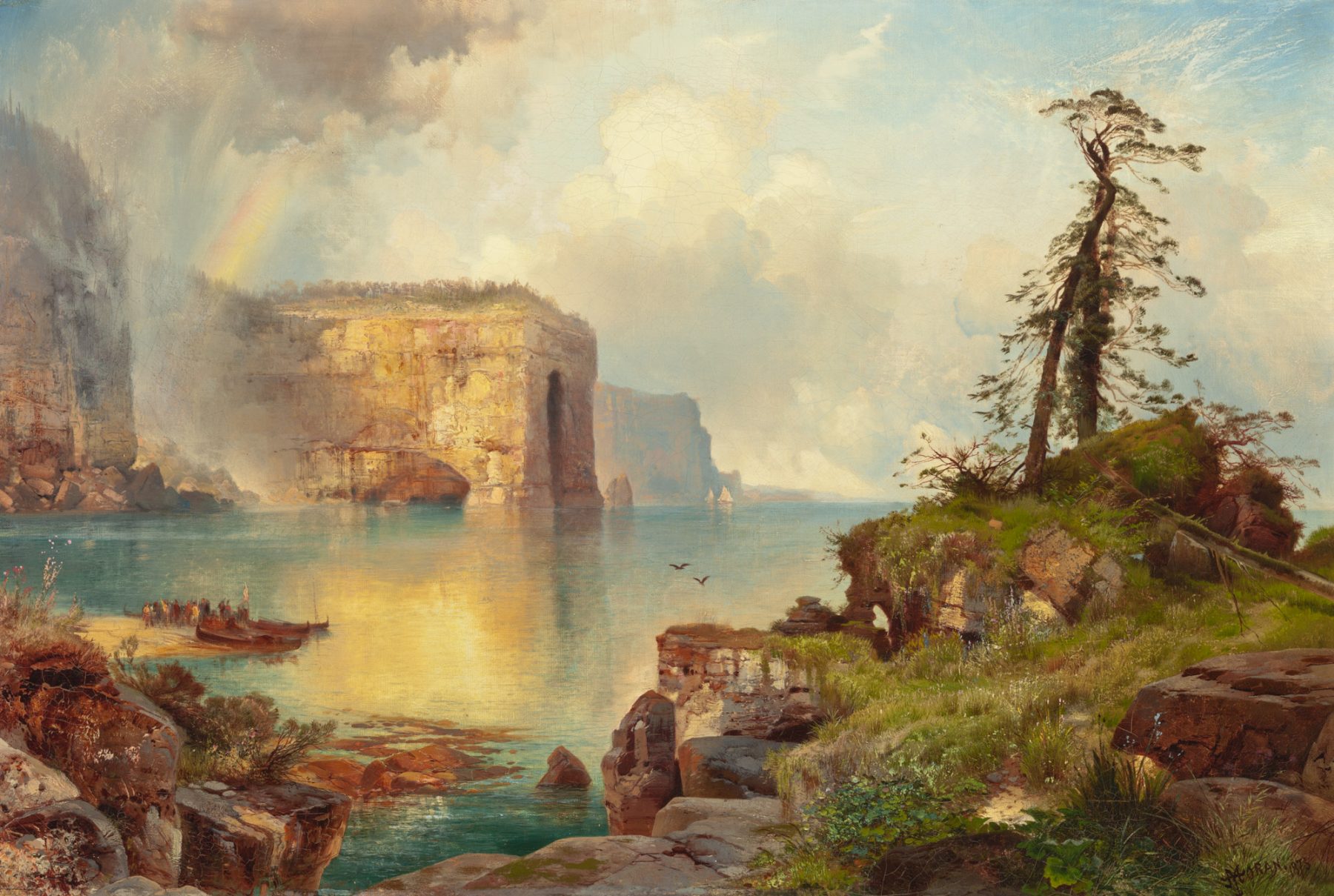Thomas Moran
Moran’s fascination with the American landscape is seen in The Great Cave, Pictured Rocks, Lake Superior, Michigan, painted in 1873. This rare northern Michigan scene by Moran depicts the natural sandstone cliffs along the shore of Lake Superior. Moran captured the splendor of the landscape in the shimmering water, the expansive cliffside cave and the awe-inspired Indigenous onlookers in the center of the scene.
“In 18060 Thomas Moran took his first sketching trip outside his home base in Philadelphia, to Michigan’s Lake Superior. Moran may have been drawn to the area because of the popularity of Henry Wadsworth Longfellow’s The Song of Hiawatha, first published in 1855. Pictured Rocks was the setting for the poem’s fictive account of the Ojibway leader Hiawatha’s life, including his marriage to Minnehaha of the Dacotah, a union that brought peace to the two warring tribes.
In Pictured Rocks of Lake Superior, the circular format of the image echoes the arch of the cliffside cave and its reflection in the water. A canoe approaches the shore, where another group awaits its arrival. A rainbow rises above the cliffs, signifying the hope of a harmonious meeting and perhaps the peaceful union of the Ojibway and Dacotah, as represented by the marriage of Hiawatha and Minnehaha.”
— Sandra Pauly, Henry Luce Foundation Curatorial Scholar for Moran Collection Research, 2021
Thomas Moran
The Great Cave, Pictured Rocks, 1873
Oil on canvas
20 x 30 inches
Signed and dated lower right
Provenance
Mrs. Philip R. Van Dwyne, Jr.
Mr. Fred F. Rogers, Jr., New Jersey
Graham Gallery, New York, NY
Manoogian Collection (acquired from the above in 1977)

